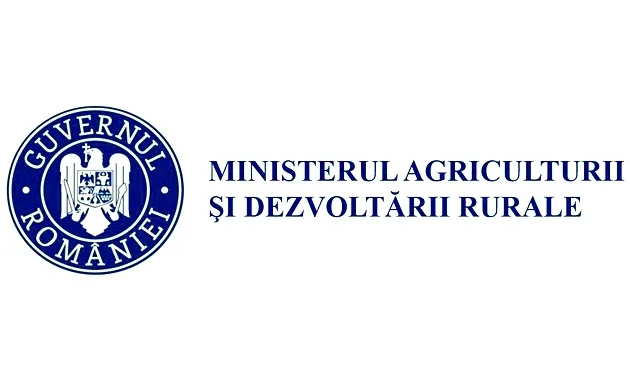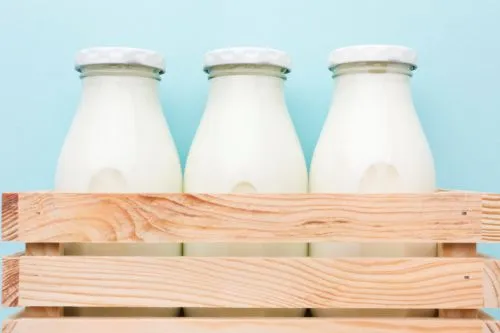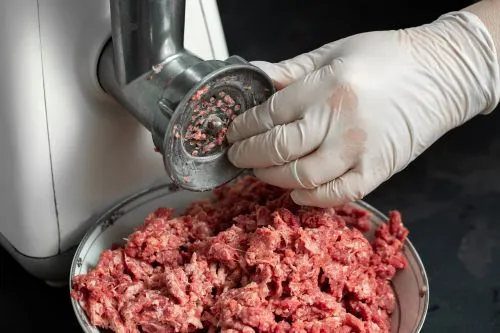
As the world continues to seek solutions to combat the negative effects of the conflict between Ukraine and Russia, as well as the crisis it has generated, and governments try to rebuild their economies, companies around the world are struggling to discern what their operations will look like.
Like most businesses worldwide, food manufacturers are facing unprecedented challenges when it comes to ensuring the success of their operations and the safety of supply chains and workers.
With an even greater focus and pressure on food safety, accurate demand planning, and proper supply chain management, food producers are grappling with new policies and standards while trying to remain profitable.
Without the ability to adapt to the current economic changes, food producers may not successfully navigate the other side of the pandemic. That's why experts from the Aptean Institute have developed a strategy for adapting food production in a post-conflict period, presented in the report titled "Preparing Your Food Manufacturing Business," which is outlined below.
Three Scenarios
This report, serving as a true "white paper," presents three scenarios that most food producers face amid this pandemic and the operational issues that may arise as a result of these scenarios. It also analyzes how food companies can work to ensure the digital transformation of their businesses in the future.
Ultimately, it examines the role that software plays in ensuring the success of food businesses and how industry-specific solutions provide the tools needed for companies to adapt to industry changes and make strategic operational decisions.
After discussions with food producers from around the world, industry experts have highlighted three scenarios that many food companies are currently facing amidst this chaotic and uncertain time.
While the products you manufacture and the channels through which you deliver your products may differ from the examples below, understanding how these scenarios relate to your business is essential for ensuring the success of a food company, both during the pandemic and beyond. Let's explore the three scenarios proposed by Aptean.
Scenario 1: Demand Increase
It is still unclear what impact the coronavirus pandemic will have on global supply chains in the future, but what is evident is the disruption it caused to manufacturing operations worldwide at the beginning of last year. While some food producers are struggling with reduced demand for their products, other industries are experiencing an unprecedented increase, the result of what experts call "panic buying" by consumers.
This scenario forces food producers to look internally and critically evaluate their current processes regarding costs and cost management. For example, meat product processors must have even more control over their costs as the prices they receive for their products on the market continue to decline.
Scenario 2: Future Demand Collapse
Like dairy processors, food manufacturers with long shelf lives, such as canned soups or frozen vegetables, are also experiencing a short-term surge in demand due to pandemic-related panic buying.
A recent report by the European Frozen Food Institute (EFFI) revealed that 90% of Europeans are now consuming more meals at home compared to data collected before the pandemic began. Consequently, EFFI found that 70% of consumers are buying more frozen food than in the months leading up to the outbreak. These figures should not be surprising. According to the EFFI survey, 86% of consumers in the European Union purchased frozen food in the first month of the pandemic for reasons that include a longer shelf life compared to fresh food and the belief that frozen food is safer than fresh food at this time.
However, unlike milk processors and short-shelf-life food producers who are currently experiencing increased demand, companies that produce frozen or canned products will likely experience a decline in future demand, as consumers have already stocked up on these products, and the need for storage diminishes.
For example, the multinational food and beverage producer Nestle experienced its best quarterly growth in the last five years amid the pandemic. Its sales of frozen and refrigerated products saw significant increases. However, while Nestlé's leadership team acknowledges its strong quarter, it also warns against assuming the same results for future quarters.
Therefore, food producers facing this scenario need to recognize that the current level of demand is an anomaly and should not be used as the sole indicator for future forecasts. Major food manufacturing companies understand that disruptions to global supply chains (in this case, the pandemic) force customers to drastically change their procurement and stocking needs.
As a result, demand variability inevitably increases as order patterns shift. While it is extremely challenging to predict how the world's supply chains will be affected as the pandemic progresses, accurate forecasts are essential to mitigate risk, serve customers, and prepare for the post-pandemic era.
Scenario 3: Channel Shifts
Government-mandated closures of foodservice and restaurant channels have wreaked havoc on how food producers can get their products to market. Food companies that relied on these channels for distribution are now forced to pivot and adapt to the changing coronavirus-induced environment.
Here's an example: Cargill Protein, a processor and distributor of beef, turkey, chicken, and eggs, typically splits its production 50/50 between retail and foodservice. However, since the pandemic hit, demand has shifted dramatically to favor retail at an 85/15 split.
Another example is Sanderson Farms, the third-largest poultry producer in the US, which plans to convert two of its facilities, primarily dedicated to supplying restaurants, to produce for grocery stores instead.
But changing operations to adapt to these channel changes is not without further complexity. For example, a ketchup producer for the food industry might package its product in five-kilogram bags and deliver six bags per case twice a week.
To switch production for retail, the factory lines will need to be reconfigured to accommodate retail-sized packaging, nutritional and allergen labeling will need to be calculated, and distribution will need to be scheduled accordingly.
Food producers facing this scenario need to realize that while pandemic-related restrictions will eventually lift, it may take some time for foodservice and restaurant demand to return.
To ensure success, it's important to remain flexible and have the capacity to adapt to market demand. While the costs of converting operations to adapt to channel changes may seem prohibitively high, short-term business optimization, considering shifts in consumer behavior that may persist post-pandemic, is essential for adjusting the business accordingly.
Save Your Business
Regardless of the circumstances and challenges your food company faces amid the coronavirus pandemic, preparing your business for the future has never been more critical. While most food producers inevitably focus on supporting their short-term business and ensuring the health and safety of their workers and consumers, they must also be concerned with implementing business continuity plans.
The unprecedented size and scale of the current pandemic will undoubtedly have long-term implications for the food industry, making it even more important to have forward-thinking strategies and protective measures in place that safeguard your business and stakeholders in the post-pandemic era.
Below, we've highlighted five ways a food business can future-proof its operations and undergo digital transformation to prepare for success in a post-pandemic market.
- Demand Planning
The ability to project future-oriented demand is essential for post-pandemic success. Consumer buying and stockpiling patterns have made it increasingly difficult for manufacturers to determine whether people are genuinely consuming more or merely stockpiling food for the future.
To accurately plan for future demand post-pandemic, food producers need to be more sophisticated in their forecasting methods than in the past. Utilizing advanced analytics tools, such as point-of-sale data or business intelligence systems, to collect historical data and isolate critical information from reports, reviews, values, and surveys provides producers with the ability to turn results into a demand planning perspective.
- Operational Flexibility
It is well known how many of the world's top manufacturing companies have had to pivot their operations from foodservice and restaurant channels to retail. To make this change quickly and accurately, these companies must rely on complex tools and systems to ensure success.
For example, a poultry processor relied on the industry for 70% of its demand. As demand decreased, this processor had the capacity to switch supply channels to retail, resulting in substantial profit growth.
However, using digital tools and systems built for the food industry, food producers have the ability to adapt rapidly to both expected and unexpected changes.
The functionality of an industry-specific solution creates flexibility for producers to change and produce a new product, adjusting operations accordingly. This includes the ability to use multiple machines to perform similar operations while adapting to changes in volume or capacity on a large scale.
- Workforce Health
While ensuring worker safety is always important, the coronavirus pandemic has pushed employee health to the forefront of most production operations. In many food facilities, employees work shoulder-to-shoulder and share many of the same resources, such as bathrooms or kitchen equipment, during a given shift. As a result, strategies for physical distancing, enhanced sanitation measures, and on-site production programs had to be implemented and rearranged to reflect government guidelines and virus prevention recommendations.
But experts are now questioning whether these measures are sufficient to keep employees safe. To ensure that your business has a healthy workforce capable of keeping up with post-pandemic production, it's essential to look at other worker safety and virus control methods.
For instance, a software solution like a Manufacturing Execution System (MES), for example, has the ability to track employees' health factors, such as temperature checks, and ensure that workers arrive healthy at production units.
By setting up an MES to trigger alerts when temperature checks should be performed and then notifying the appropriate user when a worker tests with a fever above 37 degrees Celsius, you have critical information needed to keep your team safe.
- Food Safety
Ensuring product safety is always essential for business success and well-being. But what will food safety look like in a post-pandemic market?
As safety and traceability standards continue to change and be tested during these times of crisis, it's imperative for your business to have the foresight to implement the necessary technology to comply with regulations and keep both consumers and the workforce safe.
Let's consider, for example, an Enterprise Resource Planning (ERP) solution. Not only does an ERP built for the food industry have the ability to track ingredients bidirectionally through the supply chain — a critical element in effectively tracking a product through the global supply chain during a pandemic — but it also has the capability to track production through employees.
If a worker at one of your facilities worked for four days and didn't show up on the fifth day or came in with a cough, the ERP provides visibility into the product, machines, and employees that they came into contact with during a certain time period. This insight allows you to recall potentially affected product, properly sanitize associated equipment, and notify relevant employees who worked alongside them.
- Cloud Ready
As more and more of the world's workforce works remotely in an effort to curb the spread of the coronavirus, it's imperative for your business to provide remote access to employees. While many organizations already have the technology that enables successful remote work from a cloud-based solution, for others, the coronavirus response has accelerated the need to explore the idea of a virtual workplace.
Even if your company has already embraced a remote workforce, the current pandemic is likely putting even greater pressure on the organization to become fully cloud-ready.
Cloud-based technology offers employees the ability to access all the same data and information from the same devices and solutions. It ensures collaboration and communication among employees and encourages the exchange of digital files and information.
Additionally, it enhances data security during unexpected disruptions, such as a pandemic, by keeping critical company information protected in a secure location. The ability to access your data from anywhere at any time allows you to conduct business as usual and reduces downtime and lost productivity.
Overall, the current pandemic has created a challenging environment for food producers. However, by embracing digital transformation and preparing for post-pandemic market conditions, food companies can adapt, remain resilient, and position themselves for success in a rapidly changing world.




